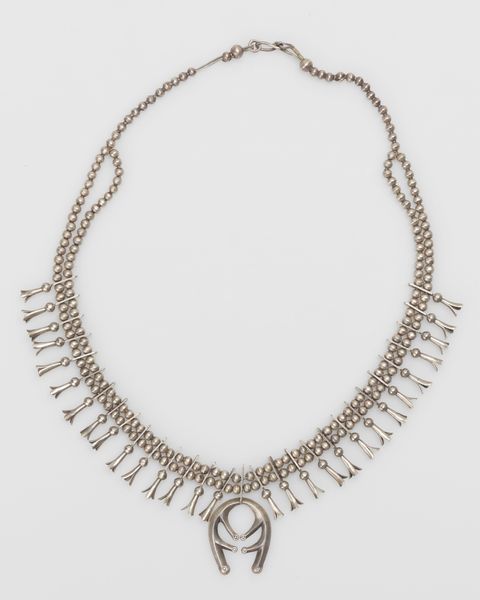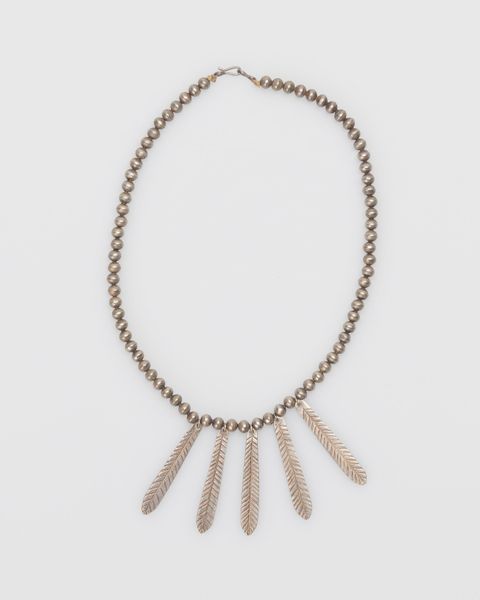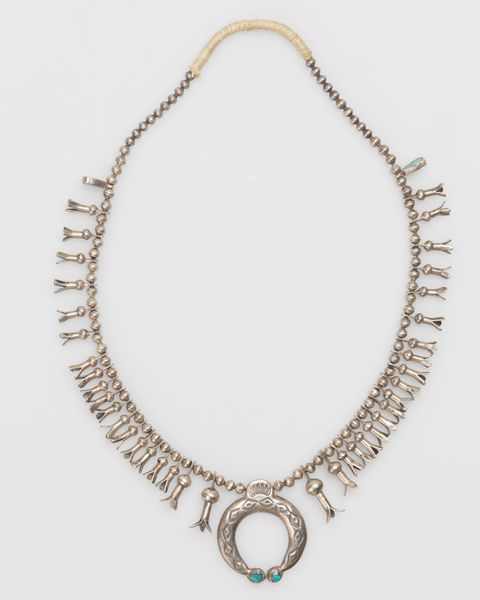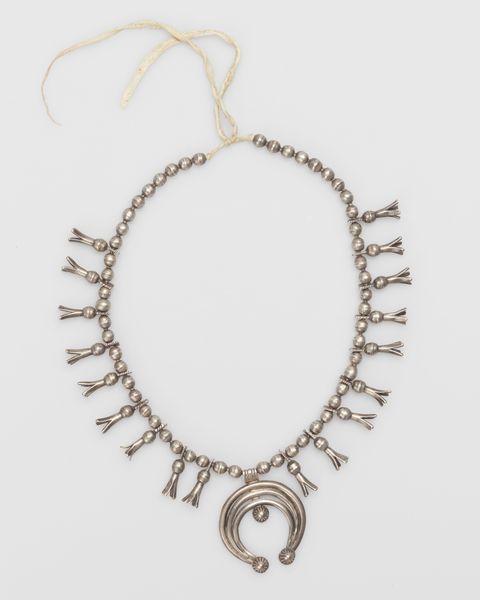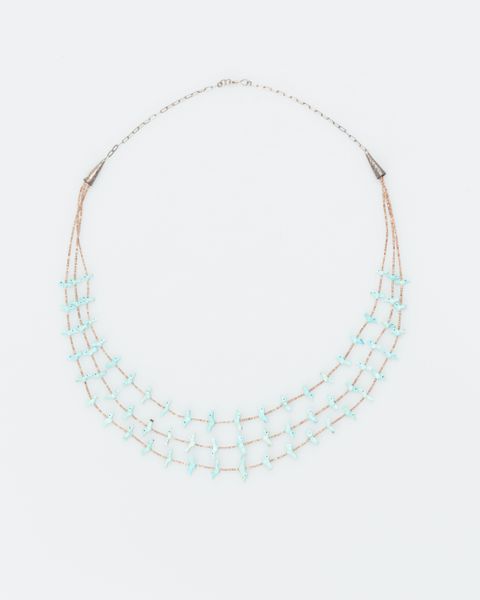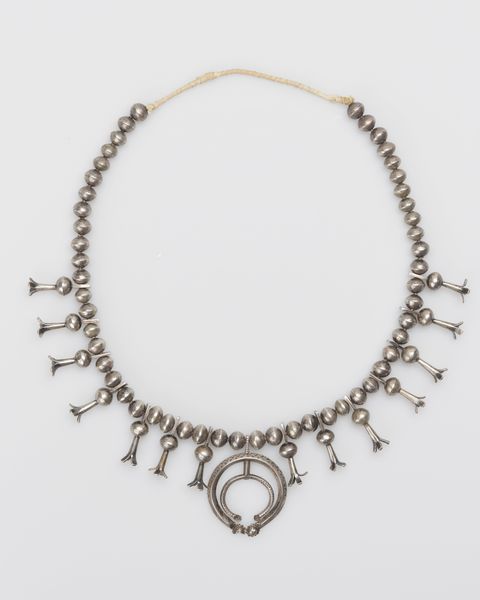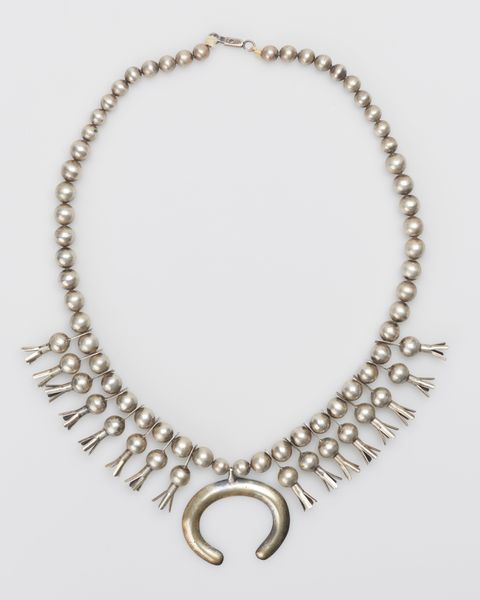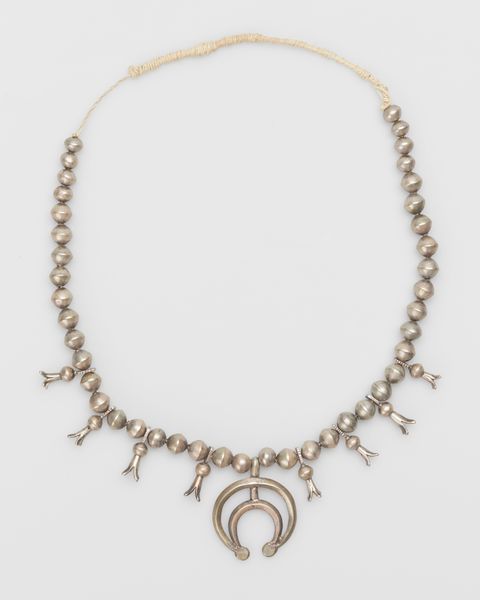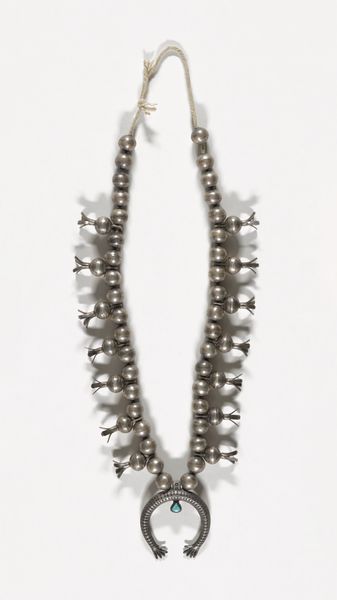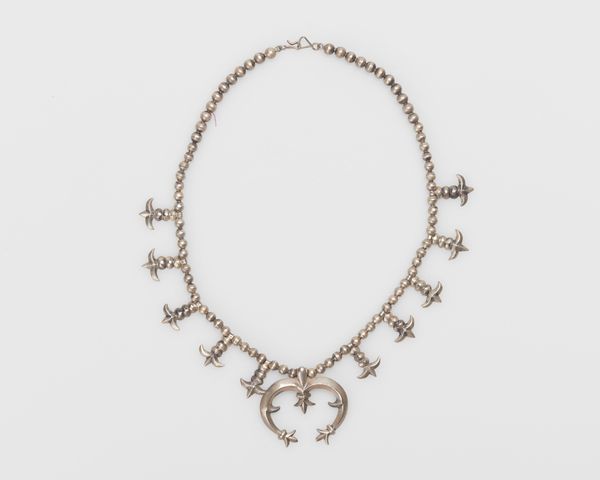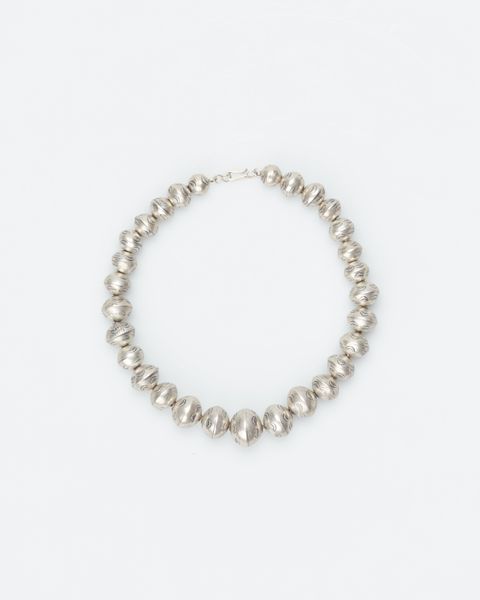
silver, metal
#
silver
#
metal
#
indigenous-americas
Copyright: Public Domain
Editor: We are looking at a Navajo necklace made of silver and fibre art around 1930. It has a delicate, almost ethereal quality with its rows of tiny silver beads and simple pendant. How would you interpret this work, particularly within its historical context? Curator: This necklace provides an interesting lens into the early 20th century and the evolving market for Native American art. While seemingly delicate, it's imbued with a complex history of cultural exchange and economic necessity. The Navajo, or Diné, like many Indigenous communities, adapted their craft to meet tourist demands. This wasn’t just about artistry; it was a strategic economic move amid socio-political pressures. Do you notice the central pendant design? Editor: It appears to be a stylized figure, maybe religious, encircled by rings. Curator: Exactly. The designs found on these necklaces often represented traditional motifs but were simplified or altered to appeal to a broader audience. There's a tension here. It served as cultural expression, economic transaction, and political negotiation. Museums like the Minneapolis Institute of Art played a crucial role in legitimizing and showcasing this art, further shaping its reception. Editor: It's interesting to consider how museums, even with good intentions, can influence the narrative around cultural objects. Curator: Precisely. The very act of display elevates it to "art," potentially overshadowing its everyday function or spiritual significance within its original context. How does understanding that affect your view of it? Editor: It definitely makes me consider the layers of meaning embedded in this piece – from personal adornment to cultural representation and market commodity. Curator: That's the power of art history! It encourages us to think critically about the social, cultural, and political forces that shape not only the creation of art, but also how we understand it.
Comments
No comments
Be the first to comment and join the conversation on the ultimate creative platform.
